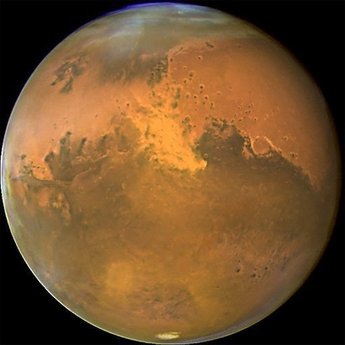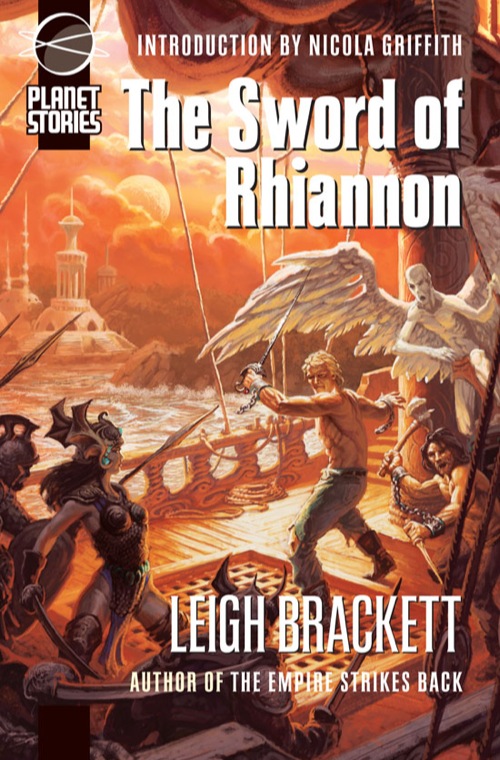Red Planet, Wet Planet
Tuesday, November 24, 2009
posted by Deuce Richardson
 Print This Post
Print This Post

“I knew it!” Leigh shouted, punching her fist into the air. “I told you sons of… sons what it would be like years ago!”
A rebel yell cut loose, and suddenly the room was a babble of voices.
— Leigh Brackett (in an alternate timeline), as envisioned by S.M. Stirling in his novel, In the Courts of the Crimson Kings.
Looks like Leigh Brackett and Edgar Rice Burroughs were more right than some scientists. Ever since NASA’s Mariner 4 did a drive-by look-see at Mars in 1964, there have been plenty of astronomers and planetologists lining up to “debunk” the idea that the Red Planet was ever anything but an arid rustball since the formation of the solar system.
A recent study of the planet’s surface features, as reported on space.com, seems to indicate that a vast ocean once covered about a third of Mars. While the ancientness of the date assigned to Mars’ thalassic period is far in excess of that indicated by either Leigh or ERB, these new findings are still a powerful testament to the prophetic power of imagination and intuition, in my humble opinion.
I sincerely hope that stretches of the newly-determined shoreline are given names like Valkis, Jekkara and Torquas. What better name for the long-vanished Martian sea than the “Throxean Ocean“? Far better to do that than to apply names from Terran geography and mythology, which has generally been the case thus far. Burroughs and Brackett were there first.
My thanks to Steven Reid Harbin.

